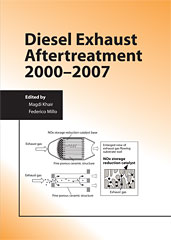Technical Paper
Numerical Simulation of the Combustion Process of a High EGR, High Injection Pressure, Heavy Duty Diesel Engine
2017-09-04
2017-24-0009
To comply with Stage IV emission standard for off-road engines, Kohler Engines has developed the 100kW rated KDI 3.4 liters diesel engine, equipped with DOC and SCR. Based on this engine, a research project in collaboration between Kohler Engines, Ricardo, Denso and Politecnico di Torino was carried out to exploit the potential of new technologies to meet the Stage IV and beyond emission standards. The prototype engine was equipped with a low pressure cooled EGR system, two stage turbocharger, high pressure fuel injection system capable of very high injection pressure and DOC+DPF aftertreatment system. Since the Stage IV emission standard sets a 0.4 g/kWh NOx limit for the steady state test cycle (NRSC), that includes full load operating conditions, the engine must be operated with very high EGR rates (above 30%) at very high load.

